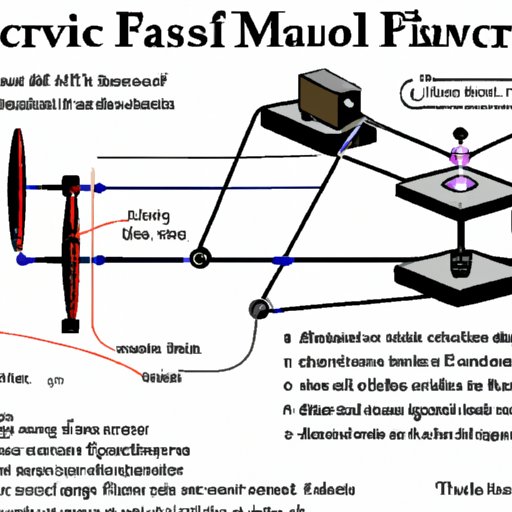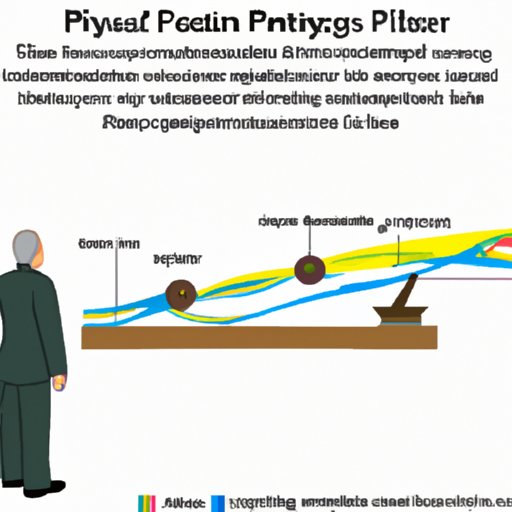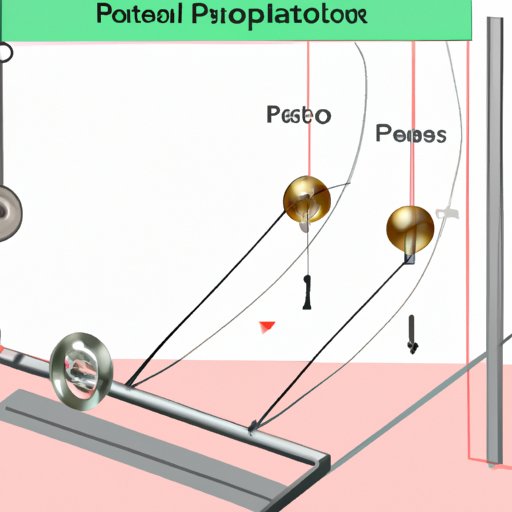Introduction
Physics is a branch of science that studies matter, energy, and the interactions between them. It is a core component of physical science, which also includes chemistry, earth science, and astronomy. This article will explore the role of physics in physical science, examining the laws of motion, impact of physics on our everyday lives, development of physics over time, and unique applications of physics in the physical world.

Exploring the Laws of Motion and Other Fundamental Physics Principles
The laws of motion are fundamental principles of physics that describe how objects move and interact with one another. They were first proposed by Isaac Newton in his 1687 book Philosophiae Naturalis Principia Mathematica. Newton’s three laws of motion are as follows:
- Law of Inertia: An object at rest will remain at rest, and an object in motion will remain in motion, unless acted upon by an external force.
- Law of Acceleration: The rate of change of momentum of an object is directly proportional to the applied force, and is in the same direction as the applied force.
- Law of Action and Reaction: For every action, there is an equal and opposite reaction.
These laws provide the foundation for understanding the behavior of objects in motion. They are used to explain phenomena such as gravity, acceleration, and friction.
In addition to the laws of motion, there are several other fundamental physics principles that are important to understand. These include the law of conservation of energy, the law of conservation of momentum, the law of thermodynamics, and the principle of relativity. All of these principles help us to understand the behavior of matter in the physical world.
Investigating the Impact of Physics on Our Everyday Lives
Physics has a significant impact on our everyday lives. From the way we travel to the way we communicate, physics plays an integral role in our daily activities. Here are some examples of how physics affects our lives:
- Transportation – Cars, planes, and trains all rely on the principles of physics to operate efficiently.
- Communication – Radio waves and microwaves are used to transmit information wirelessly.
- Lighting – Light bulbs use electricity to generate light.
- Heating and cooling – Heaters and air conditioners rely on the transfer of heat energy to keep our homes comfortable.
The applications of physics in technology are vast. From medical imaging devices to satellites, physics plays a key role in the development of new technologies.

Examining the Development of Physics Over Time
Physics has been studied since ancient times, but it was not until the 17th century that its principles began to be formalized. During this period, scientists such as Galileo, Kepler, and Newton laid the groundwork for modern physics by developing theories about the behavior of objects in motion and the nature of light.
In the 19th century, physicists such as Michael Faraday and James Clerk Maxwell made major advances in the field. Faraday developed the concept of the electromagnetic field, while Maxwell formulated the theory of electromagnetism. These developments laid the foundation for the development of electrical and electronic technologies.
In the 20th century, physicists such as Albert Einstein and Niels Bohr made major contributions to the field. Einstein’s theories of relativity revolutionized our understanding of space and time, while Bohr’s atomic model provided insight into the structure of matter.
Today, physics continues to evolve and expand, as researchers explore new areas such as quantum mechanics and particle physics. As new technologies are developed, physicists are discovering new ways to apply their knowledge to the world around us.
Studying the Intersection of Physics and Other Fields of Science
Physics is closely related to other fields of science, such as chemistry, biology, and astronomy. Chemistry and physics are both concerned with the study of matter and energy, and they often overlap in their investigations. For example, the study of thermodynamics is a combination of both chemistry and physics.
Biology and physics share many common concepts, such as the laws of motion and the principles of thermodynamics. In addition, modern biological research relies heavily on physics-based technologies such as microscopes and spectroscopy.
Astronomy and physics are also closely related. Astronomers use the principles of physics to understand the behavior of stars, galaxies, and other celestial objects. In addition, the study of cosmology requires an understanding of the laws of physics, such as the laws of gravitation and thermodynamics.

Discovering Unique Applications of Physics in the Physical World
Physics can be used to solve problems and create solutions in the physical world. For example, engineers use physics to design structures that are strong yet lightweight, or to build machines that are energy efficient. Physicists also use their knowledge to develop new materials, such as superconductors and semiconductors, that have unique properties.
In addition, physicists are exploring the potential of using physics to address global challenges, such as climate change and energy security. For example, researchers are studying how to harness renewable energy sources, such as solar and wind power, in order to reduce our dependence on fossil fuels.
Finally, physicists are investigating the possibilities of using physics to improve healthcare. For example, physicists are researching ways to use lasers and ultrasound to diagnose and treat diseases.
Conclusion
In conclusion, this article has explored the role of physics in physical science. We examined the laws of motion, impact of physics on our everyday lives, development of physics over time, and unique applications of physics in the physical world. It is clear that physics plays an essential role in our understanding of the physical world, and its applications are far reaching.
From transportation to communication, from lighting to heating and cooling, physics is a powerful tool for understanding and addressing the challenges of our world. By continuing to study and apply the principles of physics, we can make great strides towards creating a better future for ourselves and our planet.
(Note: Is this article not meeting your expectations? Do you have knowledge or insights to share? Unlock new opportunities and expand your reach by joining our authors team. Click Registration to join us and share your expertise with our readers.)
